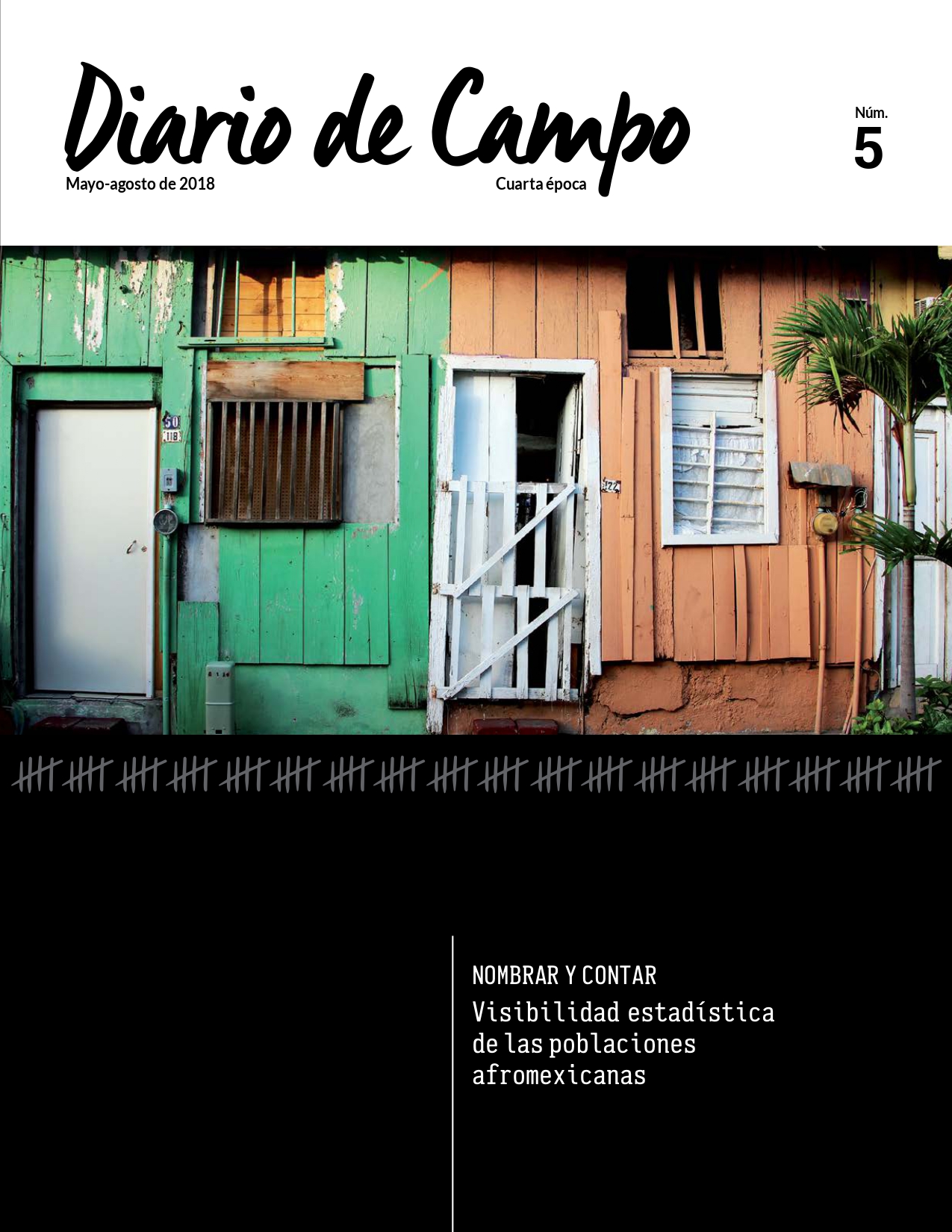Enfoques
Published 2019-08-01
Keywords
- slavery,
- censuses,
- nineteenth century,
- Mexican Texas,
- Mexico
How to Cite
Challenging the Archive: Historical Records on Slaves in Mexican Texas, 1821–1836. (2019). Diario De Campo, 5, 67-81. https://revistas.inah.gob.mx/index.php/diariodecampo/article/view/14701
Abstract
In this article we offer some methodological considerations about the use of censuses for the study of people of African descent in Mexico during the nineteenth century. The importance of exploring the context surrounding the production of sources is underscored to develop a critical reading of the data recorded on them. Through an analysis of censuses available, the number of enslaved people residing in Mexican Texas is examined. The conclusion is that the under-recording of the enslaved population in the area was caused by clashes over the preservation or abolition of slavery between Mexican legislators and American immigrants.
Downloads
Download data is not yet available.
References
- Aguirre Beltrán, Gonzalo (1972). La población negra en México: estudio etnohistórico (2a ed. corregida y aumentada). México: FCE.
- Alberro, Solange, y Gonzalbo Aizpuru, Pilar (2013). La sociedad novohispana. Estereotipos y realidades. México: El Colegio de México.
- Azcárate, Juan Francisco de et al. (1821). Dictamen de la Comisión de Esclavos. México: Imprenta Imperial de D. Alejandro Valdés.
- Barker, Eugene (1923). “Notes on the Colonization of Texas”. The Mississippi Valley Historical Review, 10 (2), pp. 141-152.
- Campbell, Randolph (1989). An Empire for Slavery: The Peculiar Institution in Texas, 1821-1865. Baton Rouge Londres: Louisiana State University Press.
- _____ (ed.) (2010). The Laws of Slavery in Texas. Historical Documents and Essays. Austin: University of Texas Press [Texas Legal Studies Series].
- Constitución Política del Estado Libre de Coahuila y Texas (1827). “Artículo 13” [Disposiciones preliminares]. Recuperado de: https://tarltonapps.law.utexas.edu/constitutions/coahuila1827spanish/preamble
- Díaz Casas, María Camila (2012). Esclavitud, ciudadanía y nación: representaciones sobre afrodescendientes en el México decimonónico, 1810-1850 (tesis de maestría). ENAH, México.
- _____ (2015). “¿De esclavos a ciudadanos? Matices sobre la ‘integración’ y ‘asimilación’ de la población de origen africano en la sociedad nacional mexicana, 1810-1850”. En Juan Manuel de la Serna (coord.). Negros y morenos en Iberoamérica. Adaptación y conflicto (pp. 273-304). México: UNAM.
- _____ y Velázquez, María Elisa (2017). “Estudios afromexicanos: una revisión historiográfica y antropológica”. Tabula Rasa, 27, pp. 221-248.
- González Claverán, Virginia (1987). “Una migración canaria a Texas en el siglo XVIII”. Historia Mexicana, 37 (2), pp. 153-204.
- Humboldt, Alexander de (1827). Ensayo politico sobre la Nueva España [t. I]. París: Casa de Jules Renouard. Recuperado de: http://cdigital.dgb.uanl.mx/la/1080012467_C/1080012467_T1/1080012467_MA.PDF
- Mullins, Marion Day (1959). The First Census of Texas, 1829-1836: to Which Are Added, Texas Citizenship Lists, 1821-1845, And Other Early Records of the Republic of Texas. Washington, D.C.: National Genealogical Society [Special Publication, 22].
- Naveda, Adriana (1987). Esclavos negros en las haciendas azucareras de Córdoba, Veracruz, 1690-1830. Xalapa: Centro de Investigaciones Históricas-UV [Historias Veracruzanas].
- _____ (2015). “El nuevo orden constitucional y el fin de la abolición de la esclavitud en Córdoba, Veracruz, 1810-1825”. En Juan Manuel de la Serra (coord.). De la libertad y la abolición: africanos y afrodescendientes en Iberoamérica (pp. 195-217). México: INAH-Conaculta/Cemca/CIALC-UNAM/Institut de Recherche pour le Développement.
- Taylor, Rosser Howard (1920). “The Free Negro in North Carolina”. The James Sprunt Historical Publications, 17 (1), pp. 5-26.
- Torget, Andrew J. (2015). Seeds of Empire: Cotton, Slavery, and the Transformation of the Texas Borderlands, 1800-1850. Chapel Hill: University of North Carolina Press [The David J. Weber Series in the New Borderlands History].
- Fuentes provenientes de archivos
- Archivo General de la Nación (AGN) (1829). “La municipalidad de Córdoba, sobre que se indemnice a los hacendados propietarios de esclavos.” México Independiente, Justicia y Negocios Eclesiásticos, vol. 48, exp. 34, ff. 305-307.

